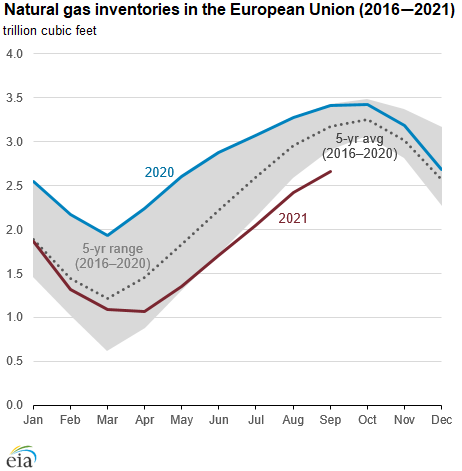Current Trends in Natural Gas Inventory

Introduction
The inventory of natural gas is a critical measure for the energy sector, influencing supply, pricing, and economic stability. With the ongoing transition towards cleaner energy sources, understanding the dynamics of natural gas inventory has become increasingly relevant, particularly in the context of rising energy demands and geopolitical tensions.
Current Inventory Levels
As of the latest report issued by the U.S. Energy Information Administration (EIA), the natural gas inventory in the United States stands at approximately 3.2 trillion cubic feet (Tcf), a level that is about 5% above the five-year average for this time of year. This increment is attributed to mild weather patterns across large portions of the country, which have curbed heating demand in recent months.
Factors Influencing Natural Gas Inventory
Several factors are currently shaping the natural gas inventory landscape. A key driver is the increased production from shale regions, which has positioned the U.S. as a top exporter of liquefied natural gas (LNG). In addition, there is a growing focus on storage capabilities, with additional underground facilities being developed to manage seasonally fluctuating supplies. Furthermore, geopolitical issues, such as the ongoing conflict in Eastern Europe, are impacting international energy flows, causing additional volatility in the market.
Market Implications
The natural gas inventory data plays a significant role in influencing market prices. Current inventory levels suggest a stable supply backdrop; however, any unexpected cold spells this winter could significantly affect prices and availability. Traders are closely monitoring weekly inventory reports as they provide real-time insights into supply-demand dynamics. Analysts project that prices will remain moderately stable unless significant inventory drawdowns occur during peak demand periods.
Conclusion
In conclusion, the natural gas inventory remains a pivotal component in understanding energy economics today. As the global energy landscape evolves, stakeholders, including consumers, investors, and policymakers, must stay informed about inventory trends and market fluctuations. The current stability offers a short-term respite for consumers, but the ongoing geopolitical tensions and weather variations could have far-reaching implications for future prices and availability. Keeping abreast of these changes is essential for making informed decisions in an increasingly interconnected energy market.









